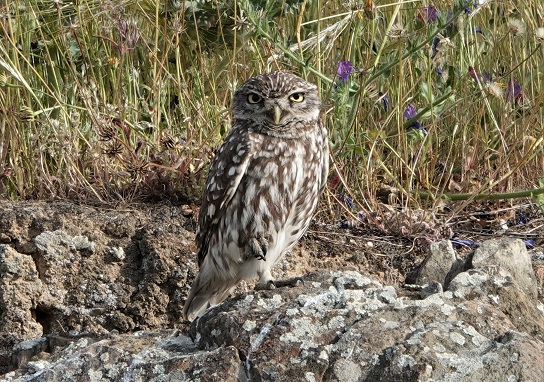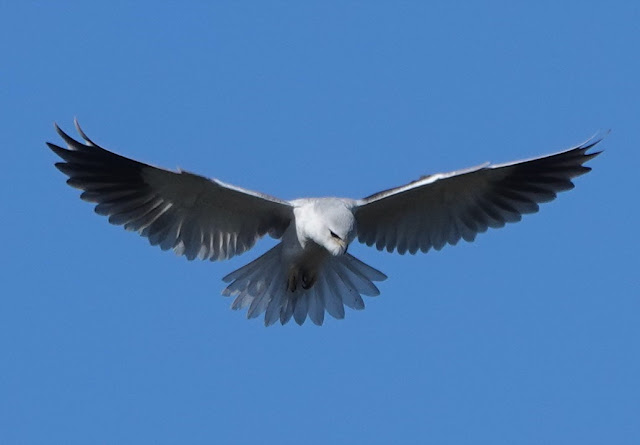Finding diversity
After such a wonderfully prolonged spring this year, the plains of Extremadura now look and smell of summer. The grass is golden and whilst the late spring flowers are still a carpet of yellows and pale purples, there is a sense now of completion. Although the sound of larks remain almost a constant in these late May mornings, the Great Bustard males are now wading through the swathes of long grass, with nothing more to concern themselves than finding food to build up their reserves once more, as typified by this photo by Raymond de Smet. Past ten in the morning and the heat haze makes finding these periscope heads above the flowering grasses almost impossible. Their shape can be confused a bit by the impressive and beautiful Cardoon thistle (a distant thistle head in the heat haze can look a little bit like the head of a feeding bustard) which to me symbolizes the plains at the end of spring.
This thistle is an important part of the rural home economy, its leaf stems being sought after in early spring as the cardo which forms the basis of a delicious and filling meal.
And yet even though the plains now seem to be slowing down, as spring turns to summer, just 43 kilometres from where I took the photos of the thistles, I took the photo below:
These gorgeous wild tulips were about a thousand metres higher up, in the Villuercas mountains, at an altitude where I had, in effect, travelled back in time to early spring. The buds of the deciduous oaks were barely opening, and other flowers typically found flowering at lower altitudes much earlier, were here at their best. The wild tulips were something very special however, the first time I had found them here. As we looked at them, the distinctive calls of Red-billed Choughs broke the mountain silence: a pair was evidently nesting in an ancient ruin nearby. A couple of days later, I visited another mountain range, the Gredos, a hundred kilometres to the north, where despite being at a similar altitude, the vegetation around me was dominated by vast expanses of yellow broom. Here there was a bird absent from the Villuercas mountains: Ortolan Buntings were singing - their rather simple far-carrying and plaintive song a constant refrain and epitomising to me to perfection the vast expanse of mountain terrain. Here too was a male Red-backed Shrike, literally one leg in Extremadura and the other in Castille y Leon, seemingly the only regular site for this Central European species in our region.
Perhaps no other time of the year demonstrates so dramatically the diversity of Extremadura, the variety of experiences, colours and species reachable within relatively modest distances, the ability to move backwards and forwards through the seasons, a time-travelling naturalist indeed.







Comments